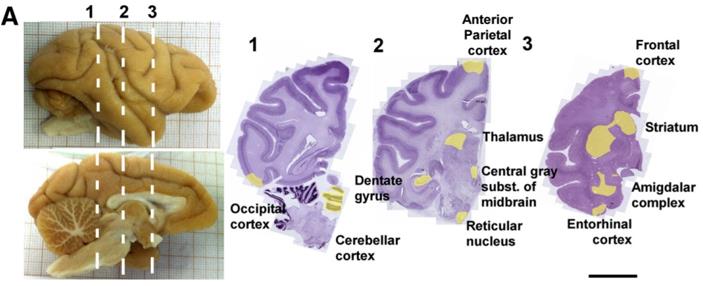Creative Biolabs has abundant experience in preclinicial projects involving the non-human primate (NHP) model of Alzheimer's disease (AD). With the advanced software and hardware instruments, the experienced team of scientists, and the most stringent QC system, we have provided different types of NHP disease models for our global clients and accomplished many research projects on our pharmacology and pharmacodynamics (PD/PK) platform.
Neurodegenerative disorders are a type of refractory disease including Alzheimer's disease, Huntington's disease, and Parkinson's disease. The therapies for these diseases are still unmet. The preclinical studies which are performed on NHP models can advance our understanding of mechanisms implicated in the pathogenesis and effective therapeutic development.
Advantages of NHP Models in Neuroscience
Although rodents are widely used to establish disease models, their anatomical structures and genetic information are far different from humans. The differences between these two species make rodent disease models difficult to simulate human diseases in terms of pathological characteristics, resulting in efficacy evaluation failure in some cases. However, NHPs which are closely related to humans, have been considered as the best preclinical species in establishing disease models, especially complicated disease models, such as neurological disease models.
What is Alzheimer's Disease?
Alzheimer's disease is a progressive neurodegenerative disease with insidious onset. Clinically, it is characterized by general dementia such as memory impairment, aphasia, apraxia, agnosia, impairment of visual-spatial skills, executive dysfunction, and personality/behavior changes. According to the degree of deterioration of cognitive ability and physical function, it is diagnosed into three periods (including mild dementia period, moderate dementia period, and severe dementia period). The cause of AD is still unknown.
Preclinical Tools for Alzheimer's Disease Research
At present, most of the AD models are established in rodents, especially in transgenic mice. However, these rodent models have obvious defects, that is, they cannot effectively simulate the characteristics of human AD, such as neurofibrillary tangles. Alternatively, primate models of AD can better present many clinical symptoms such as memory impairment, cognitive impairment, and complicated social communication, which makes them ideal preclinical tools in AD research. Creative Biolabs can provide commonly used NHP models of AD as listed below:
-
Natural aging model. NHPs that reach old age could partially present amyloidosis and tau phosphorylation.
-
Inducible model. This model is established through intracerebroventricular injection of AβOs in cynomolgus macaques. The AβOs will bind to the cells and are widely distributed in several brain regions, including the hippocampus, the hypothalamus, and the entorhinal, frontal, and parietal cortices.
 Fig.1 The distribution of AβOs in the brain. (Forny, et al., 2014)
Fig.1 The distribution of AβOs in the brain. (Forny, et al., 2014)
The NHP brain is similar to the human brain in terms of the overall structure and functional network organization. In addition, NHPs can be trained to perform many cognitive tasks used in human clinical trials. Therefore, in preclinical research, the use of primate AD models can effectively contribute to a better understanding of the pathogenesis and promote the efficacy evaluation of potential therapies. With well-equipped facilities and specialists in pathology and biology, Creative Biolabs provides not only the routine testing in the NHP models of AD, including but not limited to hematology, immunohistochemistry, histopathological examination, cerebrospinal fluid testing, and genetic testing, and also neuroimaging, electroencephalogram (EEG), cognitive and memory function tests, etc.
Creative Biolabs has provided NHP models of AD for multiple research projects, accumulating rich experience in establishing AD models in NHPs. Our team of scientists will provide solutions for any of your problems in your research, tailor your research plan, and monitor the whole progress of your project, to make sure to achieve your experimental goals. Please feel free to contact us for further discussions.
Creative Biolabs offers various Neurological Disease Models you may be interested in.
Reference
-
Forny, G.L.; et al. Alzheimer's disease-like pathology induced by amyloid-β oligomers in nonhuman primates. J Neurosci. 2014, 34(41): 13629-13643.
For Research Use Only.

 Fig.1 The distribution of AβOs in the brain. (Forny, et al., 2014)
Fig.1 The distribution of AβOs in the brain. (Forny, et al., 2014)